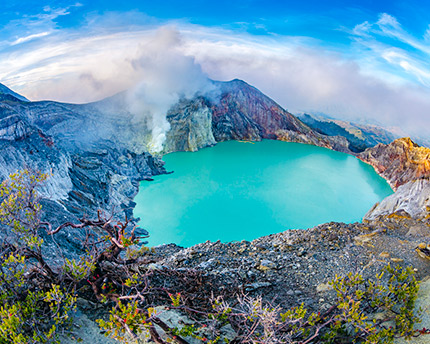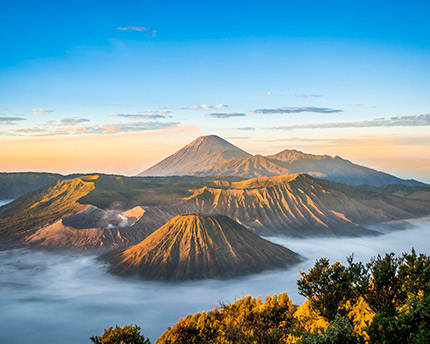One of the most magical places in Indonesia is the Kawah Ijen volcano, a prodigious mountain on Earth not suitable for every visitor. In this article, you will find out why, what this place hides and how you can visit it.
The Earth has both marvellous and surprising things. In volcanic Indonesia, on the magical island of Java, there is a still-active volcano spewing a supposedly blue lava.
The defining moment is at night since it is not that evident during the day. The crater of the Kawah Ijen volcano illuminates its peculiar secret, in a spectacle unique in the world. The lava in its crater is a deep blue colour.
Volcanoes are fascinating. This one is both beautiful and dangerous. The intense electric colour that attracts humans is actually a sulphur bomb. It is such a shame that what we find so magical, attractive and unique on the planet is actually a death trap. Find out more about the Kawah Ijen volcano and what you can do to visit it.
The world’s largest warm lake
What Kawah Ijen really contains is not blue lava. The volcano releases large quantities of sulphur dioxide at temperatures of over 400ºC, giving it its characteristic blue colour. It is the largest warm lake in the world, with a diameter of one kilometre and a depth of approximately 200 metres.
The volcano stores large quantities of sulphur, which is released under high pressure in a liquid state through cracks, indulging us with the dangerous spectacle visible at night.
The lake waters are highly toxic as they are full of sulphuric acid and hydrochloric acid, so the vapours emitted are also very harmful to humans. It is arguably the most dangerous lake in the world.
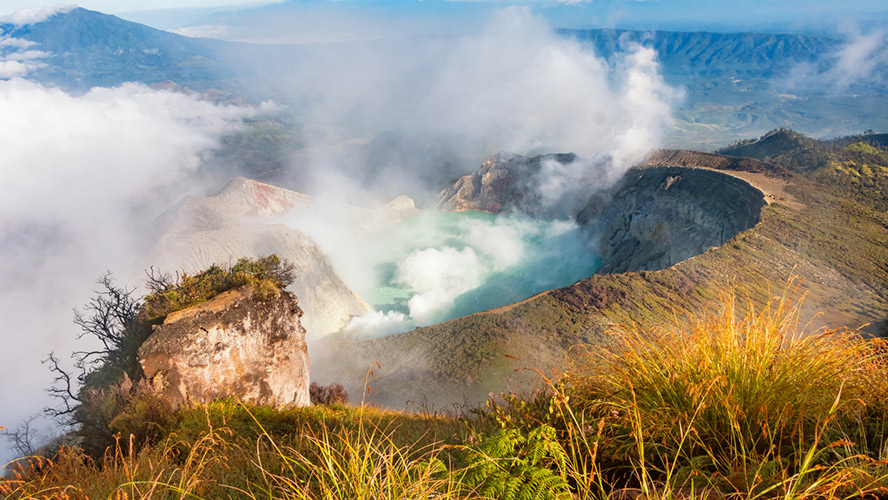
Sulphur mine
Such a quantity of sulphur released by the volcano is used for extracting the mineral in an extremely dangerous job. This is a manual operation, in one of the few mining sites in the world where no mechanical means are used.
The sulphur is channelled through pipes and poured onto the ground where it cools and turns yellow. The miners work in the same lake inside the crater and climb the inner side carrying the extracted material in simple baskets in an unbreathable atmosphere. Each basket weighs about 70 to 80 kilos and is transported about three kilometres for processing.
The torrents from the lake end up in the river Banyupahit, polluting it with sulphuric acid and metals.
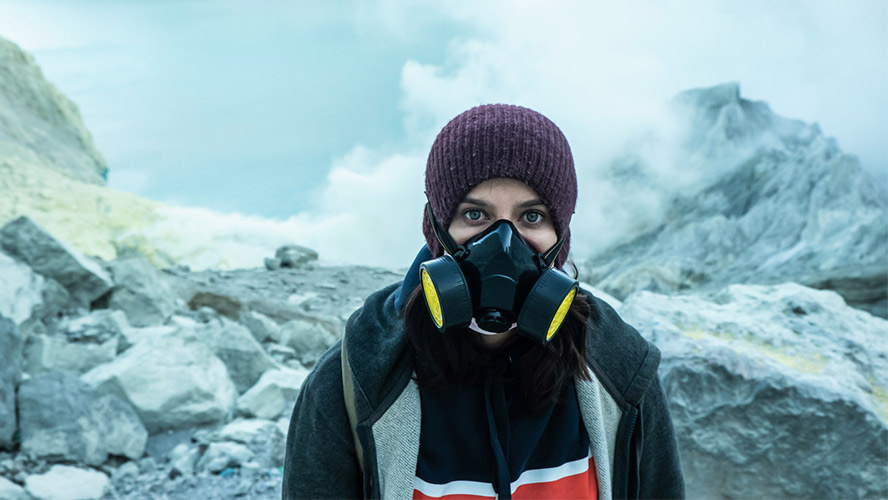
How to get to and visit the Kawah Ijen volcano
Kawah Ijen belongs to the Ijen volcanic complex, a group of volcanoes occupying a large caldera of 20 kilometres in diameter on the east of Java island, very close to the coast of Bali. Its summit is 2,799 metres above sea level.
The closest towns to the volcano are Banyuwangi and Ketapang, from where there is a boat connection to Bali in less than an hour. Banyuwangi also has an airport with connections to Bali and Jakarta. The drive from Banyuwangi or Ketapang to the base of the volcano is about 1.5 hours.
To visit Kawah Ijen, you can drive to the start of the climb. From there it is a walk of about 1.5 hours with some steep slopes. The path leads to the crater rim and it is common to see miners carrying baskets full of sulphur blocks.
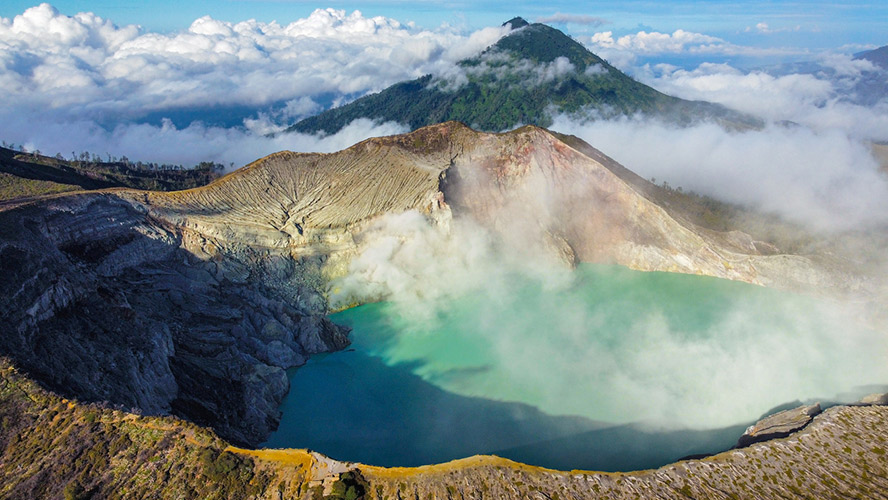
You can go down into the crater, always under the individual responsibility of each person and for a short period of time, and you must wear protective masks to avoid inhaling toxic gases and be able to breathe better. The heat, smell and poor air quality make it impossible to stay there much longer. You should be extremely cautious when touching any object and strongly avoid hand contact with the mouth or eyes.
The tour can be done on your own or with a guide. If you want to see the blue colour of the lake, you should go at night, so it is advisable to climb in the early hours of the morning.
Things to see nearby
The area around Kawah Ijen is home to other volcanoes that make up the Ijen caldera. Neighbouring Mount Raung is one of the most active volcanoes on the island, with an altitude of 3,332 metres. Its ascent is one of the most difficult in Java and only suitable for specialists.
If you want to find out more about the extraction of sulphur from Kawah Ijen, you can go to the weighing station, where each bearer places his basket on the scales and is paid for his work. It is in Paltuding Post, near the car park.
You can also visit the Blawan hot springs, with sulphurous waters from Kawah Ijen but at a skin-friendly level. You can take a dip in one of its pools and take advantage of their benefits.
Around the volcano there are coffee and latex rubber plantations. You can visit them in the Kalibendo area.
Where to stay on Java island
A good place to stay on the island of Java is The Orient Jakarta, a recently opened five-star hotel that is a member of The Leading Hotels of the World. Indulge yourself on this trip to Indonesia by enjoying the luxury of this 153-room Oriental-style establishment.
The Orient Jakarta is located on Sudirman Street, one of Jakarta’s main thoroughfares and the business centre of the Indonesian capital. You will be able to enjoy one of the most modern areas, full of skyscrapers and shopping areas.




































































